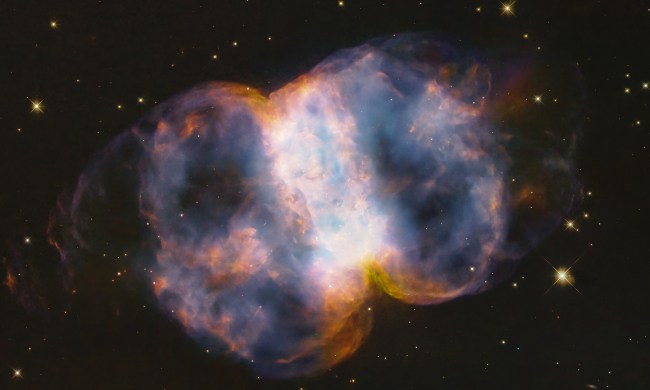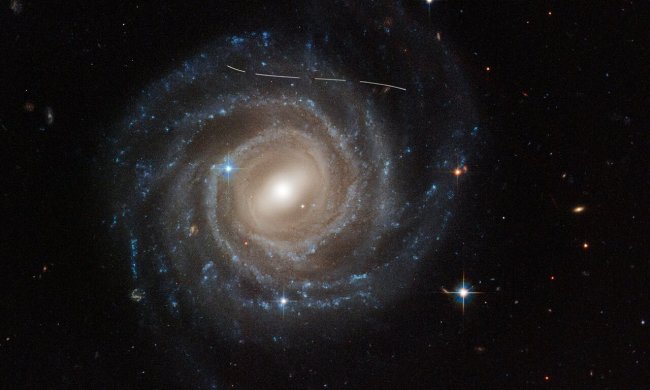This week’s Hubble image shows an unusual type of galaxy that might seen more at home in the ocean than among the stars: a jellyfish galaxy. These galaxies have a main body of stars, with tentacle-like structures reaching off away from the body in just one direction. This particular jellyfish galaxy, known as JW100, is located more than 800 million light-years away and is found in the constellation of Pegasus.
The jellyfish galaxy is located toward the bottom right of the image, with purple-pink tentacles of stars reaching downward. In the upper middle part of the image, you’ll also see two very bright blobs, which are the core of another galaxy within the same galaxy cluster. This nearby galaxy, called IC 5338, is the brightest one within the cluster and has a large glowing area around it called a halo.

As for the jellyfish galaxy, its strange shape is formed through a process called ram pressure stripping. “Ram pressure stripping occurs when galaxies encounter the diffuse gas that pervades galaxy clusters,” Hubble scientists explain. “As galaxies plow through this tenuous gas, it acts like a headwind, stripping gas and dust from the galaxy and creating the trailing streamers that prominently adorn JW100. The bright elliptical patches in the image are other galaxies in the cluster that hosts JW100.”
Scientists are interested in studying jellyfish galaxies to learn more about how stars are formed in their long tendrils. The ram pressure stripping effect feeds dust and gas into the tendrils, which then become hot spots of star formation called starbursts. By studying how stars form in these busy environments, astronomers can learn more about both star formation and about the host clusters in which the jellyfish galaxies reside.



